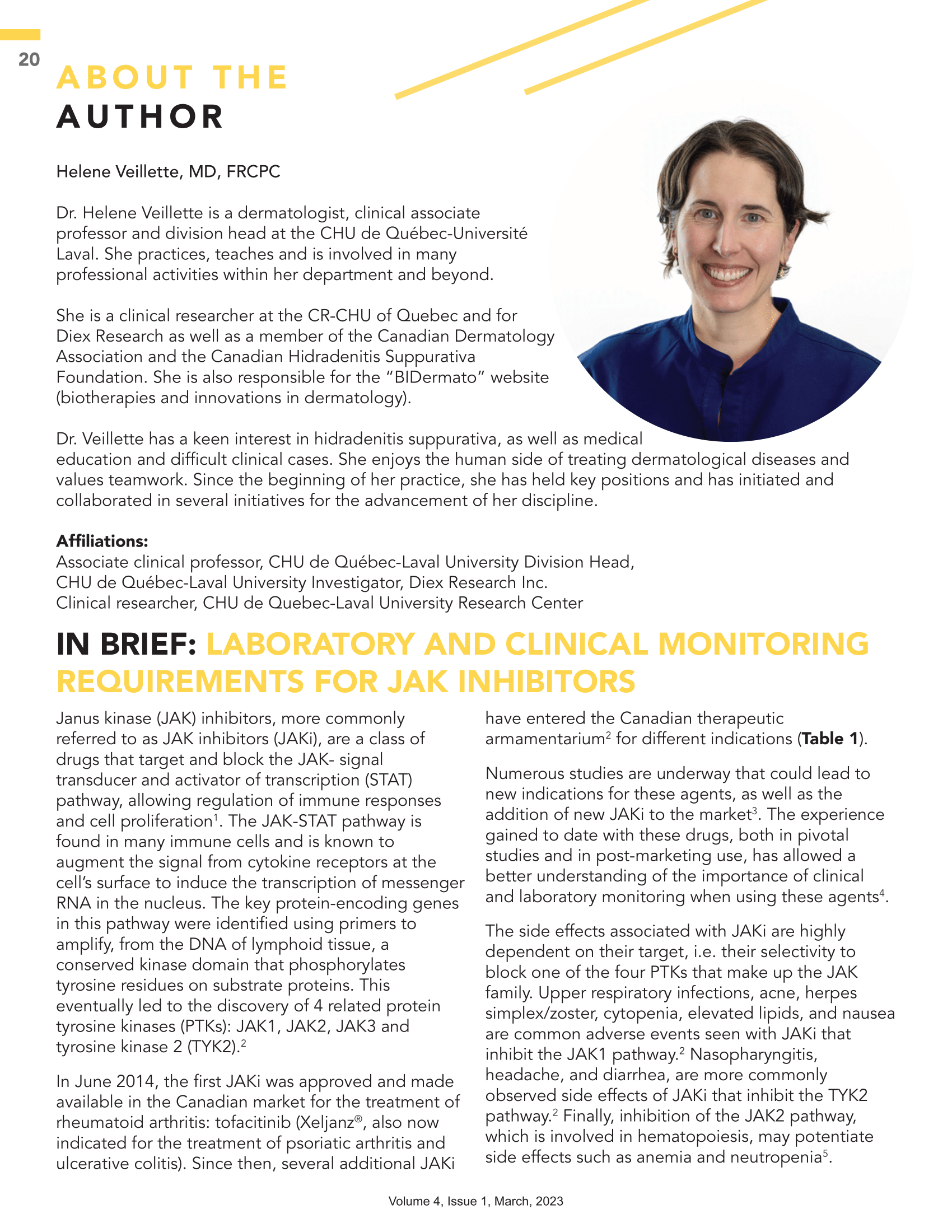In Brief: Laboratory and clinical monitoring requirements for JAK inhibitors
Abstract
Janus kinase (JAK) inhibitors, more commonly referred to as JAK inhibitors (JAKi), are a class of drugs that target and block the JAK- signal transducer and activator of transcription (STAT) pathway, allowing regulation of immune responses and cell proliferation. The JAK-STAT pathway is found in many immune cells and is known to augment the signal from cytokine receptors at the cell’s surface to induce the transcription of messenger RNA in the nucleus. The key protein-encoding genes in this pathway were identified using primers to amplify, from the DNA of lymphoid tissue, a conserved kinase domain that phosphorylates tyrosine residues on substrate proteins. This eventually led to the discovery of 4 related protein tyrosine kinases (PTKs): JAK1, JAK2, JAK3 and tyrosine kinase 2 (TYK2).
References
Damsky W, King BA. JAK inhibitors in dermatology: The promise of a new drug class. J Am Acad Dermatol. 2017;76(4):736-744. doi:10.1016/j.jaad.2016.12.005
M Bohdanowicz. JAK-STAT pathway inhibitors: A new jackpot for dermatology. Canadian Dermatology Today. 2022;3(1):39-45.
Spinelli FR, Meylan F, O’Shea JJ, Gadina M. JAK inhibitors: Ten years after. Eur J Immunol. 2021;51(7):1615-1627. doi:10.1002/eji.202048922
McLornan DP, Pope JE, Gotlib J, Harrison CN. Current and future status of jak inhibitors. The lancet. 2021;398(10302):803-816.
Nash P, Kerschbaumer A, Dörner T, et al. Points to consider for the treatment of immune-mediated inflammatory diseases with Janus kinase inhibitors: a consensus statement. Ann Rheum Dis. 2021;80(1):71-87. doi:10.1136/annrheumdis-2020-218398
Abbvie Canada. Rinvoq, 2022. Available : https://www.abbvie.ca/content/dam/abbvie-dotcom/ca/fr/documents/products/RINVOQ_PM_FR.pdf [Accessed 09 Oct 2022]
Pfizer Canada. Cibinqo, 2022. Available : https://www.pfizer.ca/sites/default/files/202208/CIBINQO_PM_FR_245854_05AUG2022.pdf [Accessed 09 Oct 2022]
Bristol-Myers Squibb Canada. SOTYKTU, 2022. Available: https://pdf.hres.ca/dpd_pm/00068437.PDF [Accessed 27 Dec 2022]


